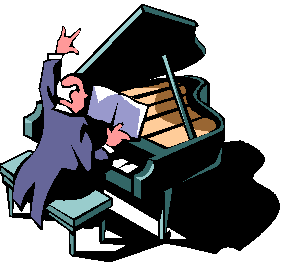Sunday, September 14, 2008
What is a Piano Concerto?
A piano concerto is a type of classical composition that features the piano accompanied by a group of instruments used to produce a full backing sound. The instrument group in a piano concerto is usually an orchestra (though smaller ensembles aren't at all uncommon), and the piano concerto is almost always written in sonata form. The best known examples of the piano concert are from the baroque and classical eras when Bach and Mozart, respectively, specialized in the form; it's important to note, however, that Bach's piano concertos were adapted to the piano only after the harpsichord fell out of favor.
Many, many piano performances are comprised of a piano concerto; it's a wonderfully melodic, magnetic form of composition made even more compelling by the orchestral accompaniment. But even though the orchestra is much larger than a singular pianist, the piano is truly the star of a piano concerto. The orchestra's music is composed carefully to showcase the instrument and makes the piano sound fuller and richer as a result.
As the piano concerto is written in sonata form, the piece usually contains three movements -- though these will often shift and change to reflect less of the sonata form on which they were based. The first movement of a piano concerto is the shortest part; it's upbeat and energetic, grabbing the listener with the first note. The second movement of a piano concerto is far slower, often with the orchestra dropping back to give the piano's melodies a fair amount of space. The last movement of a piano concerto returns to a dynamic similar to that of the first movement, sometimes larger; at times the third movement will re-introduce the original melody of the piano concerto, but it is by no means rote for the form.
Subscribe to:
Comments (Atom)


